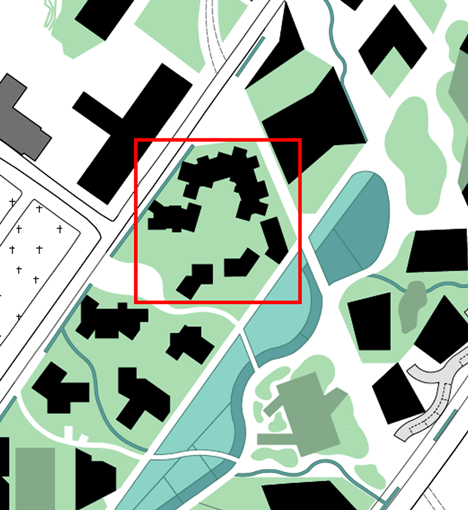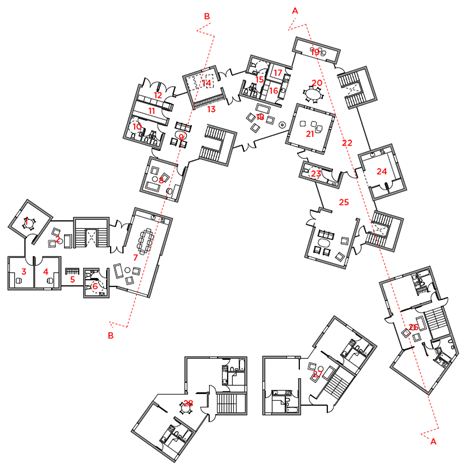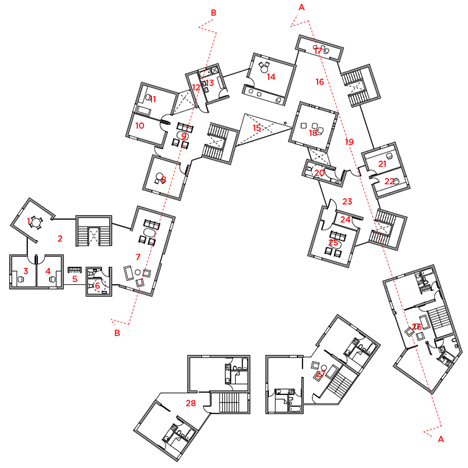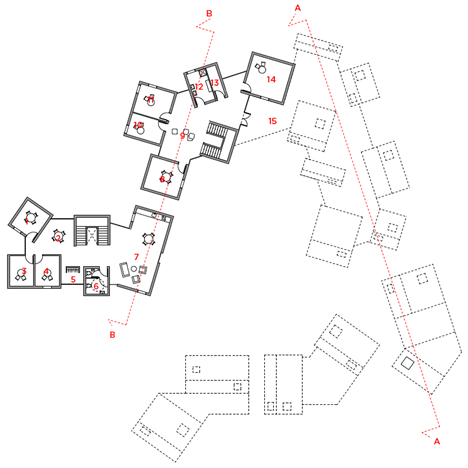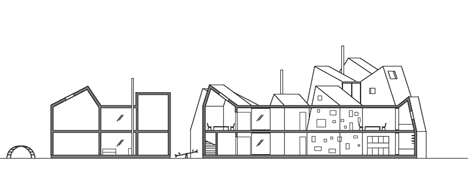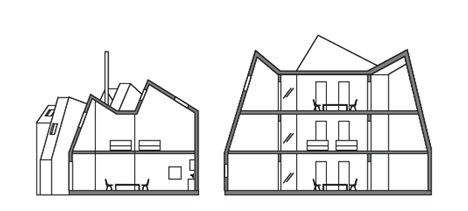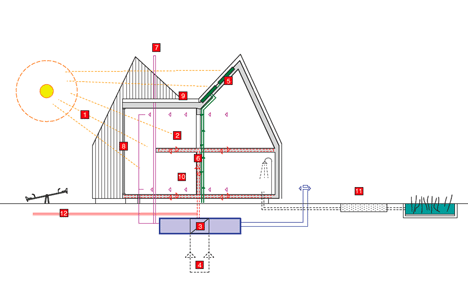출처: www.dezeen.com
사회로부터 소외된 사람들의 공간, 이를테면 양로원, 고아원, 미혼모 보호소, 구치소 등등은, 자금 사정과 사회적 관심 결여로 인하여 싸게, 막 지어지는 경우가 있는데, 오히려 이런 장소일수록, 그곳에서 상처받고 힘이 없어 머무르는 이들을 위해 가급적 안락하고 포근한 장소로 만들어줘 그들에게 힘이 되어야 한다 생각한다. 그것이 건축, 공간이 제공할 수 있는 사회적 영향력중 하나일 것이다.
장애를 가진 여성들과 아이들을 위한 거처로 디자인된 이 계획은 그런 의미에서 좋은 프로젝트라고 생각한다. 집이라는 개념이 줄수 있는 가장 기본적인 도형을 기본 유닛 삼아, 거대한 전체 센터를 잘게 부수어 옹기 종기 모여사는 마을의 형상을 만들어 내었다. 유닛과 유닛들이 기본적인 코너와 모양을 잡고 그 유닛들을 이어 만든 공공공간을 만들어 추운 날씨에 바깥 활동이 불편한 거주자들을 위해 실내지만 실외같은 공간을 만들어 주었다. 각각의 유닛들은 작은 사이즈지만 포근한 상상속의 집을 연상시키며 안정감을 제공하고, 군더더기 없이 기후와 환경에 적합한, 기본에 충실한 형태를 취하고 있다. 여러가지로 본받을 점이 많은 계획이다.
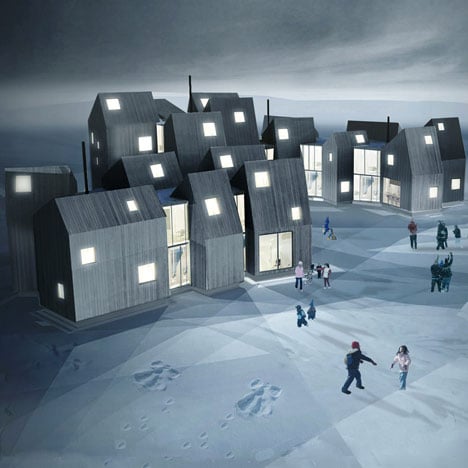
Norwegian studio Fantastic Norway have designed a series of interconnected homes for disadvantaged women and children in Nuuk, Greenland.
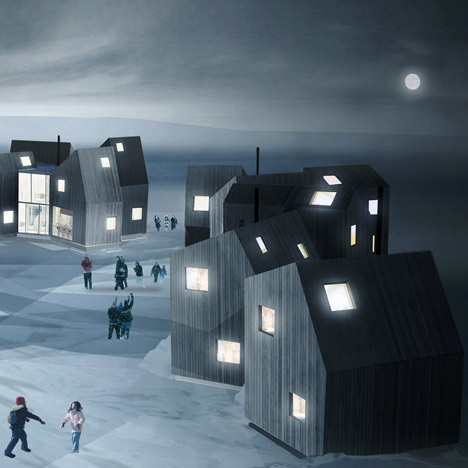
Called House of Families, the scheme features a cluster of dwellings that are connected to each other by communal living areas, playrooms, kitchens and meeting places.
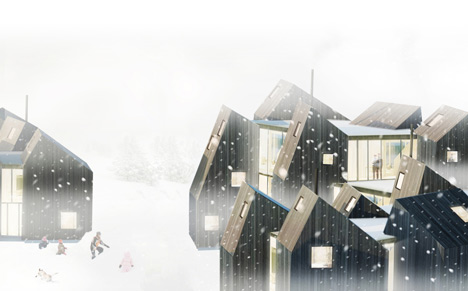
The project forms part of a larger development of the city centre, led by Dahl & Uhre Arkitekter and TNT Nuuk.
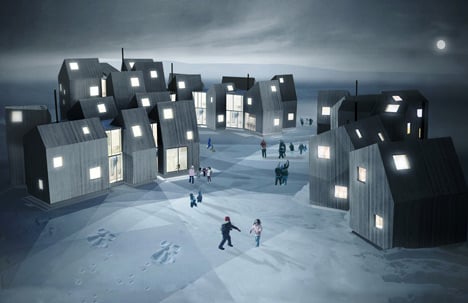
More residential architecture on Dezeen »
Click for larger image
The following information is from the architects:
HOUSE OF FAMILIES
“House of families” is a building for disadvantaged young women with young children in Nuuk / Greenland, designed by Fantastic Norway:
The project is part of an overall strategic plan for the Nuuk center called “Middle of the world, the middle of Nuuk”, led by Dahl & Uhre architects and TNT Nuuk architects. Invited into the over all project is also MDH architects, Fantastic Norway. 42 architects + Regionalassociates, M: ARC + + Arkitekti Helena Lennert are also invited as guests in this project. The client is the Greenland Home rule and Kommuneqarfik Sermersooq.
Click for larger image
The house’s main task will be to teach families and mothers to fend for themselves, enabling them to live an independent life. The building will appear as inviting and protective, safe and friendly. The building mass is broken up into smaller building volume. This way the building is perceived not as a large institution, but rather a composite of many small houses: Of many families.
Click for larger image
A social network can be for many the road back to society, therefore the building’s “conceptual backbone” is a range of social zones and meeting places binding the different functions together. Everyday common functions such as kitchens, playgrounds and sitting room is the building’s “red line“. Beyond this, the building also protects the out door areas against a rough climatic situation. The building mass is dense and closed towards the north. The out door spaces are also protected from the wind and rain from the southwest.
Click for larger image
Towards the south the building breaks up and lets light and greenery into the park in front of the building. Further on the Family House has a thorough ecological profile. In addition to connection to an external heating system, the building is self-sufficient with heating, the passive house technology, solar panels and water heating. A technological management system regulates and controls the energy consumption.
Click for larger image
TEAM:
Fantastic Norway: Anette c.Flygansvær, Håkon Matre Aasarød, Erlend Blakstad Haffner, Ingeborg c.Lindheim og Simon Pranter.
The overall strategic plan for the Nuuk center is led by Dahl&Uhre arkitekter og TNT Nuuk arkitekter, in colaboration with MDH arkitekter, Fantastic Norway, 42 architects +Regionalassociates , M:ARC+ Arkitekti+Helena Lennert.
Click for larger image
Click for larger image
Click for larger image
Click for larger image
Click for larger image

